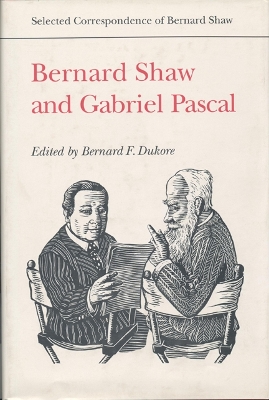Selected Correspondence of Bernard Shaw
2 primary works
Book 1
In his introduction Dan H. Laurence notes that 'theatrics' connotes not only activities of a theatrical character but behaviour that manifests itself as theatricality. All the correspondence selected for this volume - most of it hitherto unpublished - relates to Bernard Shaw's theatre dealings and theatrical interest, at the same time attesting to the 'histrionic instinct' and 'theatrified imagination' (his own phrases) of the man who penned them. More than one hundred letters are represented, starting from mid-1889, when Shaw had not yet completed his first play and was known instead as a music critic, journalist, socialist organizer, and street orator. The letters reveal a consummate man of the theatre: a dramatist, director, actor, designer, publicist, financial backer, translator, and critic concerned with such varied issues as censorship, theatre politics, prying journalists, and wireless and television performance. The letters are shaded with histrionic tones of assumed anger, irritation, and anguish. The style invariably is colloquial, free-flowing, ebullient - and personal.
Book 3
Bernard Shaw and Gabriel Pascal
by Gabriel Pascal and George Bernard Shaw
Published 17 September 1996
After movie-makers in England bungled film versions of Bernard Shaw's How He Lied to Her Husband and Arms and the Man, producers and directors in Germany and Holland botched those based on Pygmalion, and a Hollywood screenplay desecrated The Devil's Disciple, Shaw took a chance on Gabriel Pascal and gave him permission to produce a movie version of Pygmalion in England. The contract was signed on 13 December 1935 and Pascal, a charming, flamboyant Hungarian emigre with relatively little experience in cinema, did the playwright proud. Shaw's gamble paid off in this Pygmalion, which, to this day, is usually claimed to be the best film version of any of his plays. This first collection of the correspondence of Bernard Shaw and Gabriel Pascal contains 268 letters, the greatest portion of which have not been previously published. They provide an intimate, behind-the-scenes view of the film industry's day-to-day workings and of the art of movie-making, from the signing of the first contract between Shaw and Pascal, to Shaw's death in 1950. The letters reveal the great extent to which Pascal, unlike his predecessors, scrupulously kept Shaw informed of what he did.
We learn about whom Pascal negotiated with, the merits of association with certain individuals or businesses, contract problems, the backbiting and backstabbing of the industry, difficulties with casting, and progress throughout the filming. Shaw accepted and embellished some of Pascal's ideas for production, and vehemently disagreed with others. Their correspondence highlights the differences in personality between the two men. Shaw was ever the astute businessman, while Pascal was the eager artist. Shaw the methodical mastermind contrasted sharply with Pascal the entrepreneur with many projects under development, few of which came to fruition. Most important, however, the letters, postal cards, and telegrams collected here reveal how Pascal fought for the integrity of Shavian cinema; how, as a director, he tried to create films that were true to their dramatic sources; and how, in partnership with Pascal, Shaw's cinematic writings flourished.
We learn about whom Pascal negotiated with, the merits of association with certain individuals or businesses, contract problems, the backbiting and backstabbing of the industry, difficulties with casting, and progress throughout the filming. Shaw accepted and embellished some of Pascal's ideas for production, and vehemently disagreed with others. Their correspondence highlights the differences in personality between the two men. Shaw was ever the astute businessman, while Pascal was the eager artist. Shaw the methodical mastermind contrasted sharply with Pascal the entrepreneur with many projects under development, few of which came to fruition. Most important, however, the letters, postal cards, and telegrams collected here reveal how Pascal fought for the integrity of Shavian cinema; how, as a director, he tried to create films that were true to their dramatic sources; and how, in partnership with Pascal, Shaw's cinematic writings flourished.

